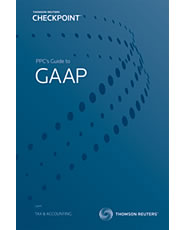Trademark Protection in the EU.
A robust framework for business growth!
In the dynamic landscape of intellectual property rights, the European Union (EU) stands out with its robust trademark protection system. Seamlessly governed by European Commission the system evolves to enhance its effectiveness and accessibility for businesses. As a regional system it allows for a protection of a trademark in all EU member states.
As a rule, trademark rights have a territorial character, which means that protection is granted only in the country where the trademark is registered. This rule constitutes a basic, most common system of trademark protection – i.e. national system provided by appropriate national IP protection authorities. The second system of trademark protection is an international (world) system governed by Madrid Accord on International Trademark Registration. It allows for protection of a mark in a number of countries being parties to this Accord. Lastly, there are also several regional systems in which a protection is granted within a group of countries which share common economic or administrative goals. From the perspective of the European market the most relevant system is provided by EUIPO (European Union Intellectual Property Office) in Alicante.
EUIPO system in brief
The EU system allows businesses to protect their trademarks in all 27 EU member states through a single registration with EUIPO. It is an attractive alternative to registering and protecting trademarks within frameworks of 27 separate national systems.
EUIPO is a key institution within the EU framework responsible for managing EU trademarks and registered designs at EU level and safeguarding intellectual property rights across the EU. It plays a pivotal role in managing the registration processes for trademarks and designs within the European Union and offers an accessible platform where businesses can swiftly register their trademarks, fostering protection and recognition of their brands.
EUIPO has been set up through a separate and specific founding act, namely Regulation (EU) 2017/1001 of the European Parliament and of the Council of 14 July 2017 on the European Union trade mark.
This institution safeguards the harmonization of IP laws and practices across EU member states promoting consistency and reliability in the protection of IP rights. It can be characterized as a centralized authority overseeing the registration, management, and protection of trademarks and designs facilitating a cohesive and efficient intellectual property framework across the EU.
EUTM
The system created by EUIPO revolves around a concept of European Union Trademark (EUTM), formerly known as a Community Trademark (CTM). It is a unified IP right recognised across all EU member states that grants exclusive rights to use a trademark within the EU’s jurisdiction. The EUTM covers all 27 EU member states with a single registration and provides a cost-effective (in comparison to separate registration in particular member states) and efficient means to protect trademarks across the common market.
Through a single, unitary registration, enforceable throughout the European Union a holder of EUTM gains exclusive rights to use a trademark and prevent unauthorised use by others in all member states. Such exclusive rights are granted for a period of 10 years. Subsequently it can be indefinitely renewed for successive ten-year periods.
It is important to remember that the EUTM system does not substitute national systems of trademark protection in the member states, but they operate alongside each other (and a Benelux trademark registration system covering Belgium, The Netherlands and Luxembourg). Simultaneous existence of EUTM system and national systems does not mean that any of them prevails over another. They both offer exclusive rights to use trademarks and the main difference between them is in their respective geographical scope.
Prima facie it may seems obvious that the European system is more attractive, however in some situations it may occur that choosing a national system makes more sense – e.g. in case of purely local businesses active only in one member state with no need or ambition to enter another EU markets.
The same mark can be registered at EU and/or national level. Furthermore with any future enlargement of the European Union any EUTM registered or applied for before the accession of new countries will automatically extend to the new member states without any formalities or additional fees. On the other hand any such future enlargement may increase the probability that there will be third parties who may consider that an EUTM (or application therefor) conflicts with their trademark rights and oppose the application accordingly.
The co-existence of EU and national trademark protection system, while generally advantageous to the businesses willing to safeguard their IP rights, may sometimes lead to problematic situations. It may occur that a mark protected under a national system of a particular member state will not obtain the EU-wide protection. The IP law within the EU is harmonized, so the member states should use comparative criteria for assessing trademark applications, however in some situations the appropriate authorities (EUIPO or a national IP protection authority) may not be unanimous in assessment of certain features of a sought trademark.
As it is evident from the foregoing the EUTM is an all-or-nothing option: either one gets it for the whole EU, or they do not obtain it at all. In the event the EU application is rejected the applicant may either reapply with any necessary alterations made to the mark in question or try to seek protection on national level in chosen member states.
The issue of EUTM protection criteria, together with some interesting caselaw will be addressed in one of the upcoming articles.
Before you apply
As in any other trademark protection system the EUTM procedure needs several steps to be taken and certain formalities to be met. EUIPO recommends that there are 4 things to check before applying.
The first, obvious step requires an applicant to check the availability of a sign to be registered. One needs to be sure that no one else has a right to it or to a similar sign that could be in conflict with the mark sought.
The most frequent challenges come from other registered trademarks. In order to mitigate a risk of any conflict, the applicant should search an EU-wide trademark database TMView containing information on trademark registrations and applications coming from all the EU national IP offices, the EUIPO and even some offices outside the EU.
This step is important because a trademark application or later registration may be challenged by the owner of an earlier right. If a potentially conflicting trademark (e.g. similar mark for the same or similar products) is already registered or is in the process of registration at EUIPO or in any EU member state, the trademark for which the protection is sought could be opposed by the owner of that earlier trademark, which in turn may lead to a refusal.
The second thing to carefully consider is a scope of goods or services to be covered by a trademark. It is important as it not possible to add to or change the list of goods or services after applying. Identifying goods or services is also important in order to verify the availability and registrability of a trademark.
The next thing to be examined is whether a trademark for which the protection is sought is acceptable. In particular the applicant should consider if a sign does not fall into the following categories:
- descriptive trademark
- mark lacking a distinctive character
- mark containing other restricted signs or emblems
- deceptive or offensive
These categories and features defined above result, or should result, in refusal of granting a registration.
The last thing is to consider whether the applicant falls into a category of businesses eligible for reimbursement of the costs of application. SME (small and medium enterprises) may apply for funding and be reimbursed 75% of the costs. Application for SME Fund may delay the trademark application by approximately 3 to 4 weeks.
EUTM registering procedure
An EUTM application may be submitted by any natural or legal person from anywhere in the world – the process is not limited only to EU citizens or EU based businesses.
The application must be filed directly with EUIPO. There is no legal requirement to have a professional legal representation for filing of an EUTM application, but almost all other actions before the EUIPO will require that the applicant, proprietor or opponent who is not a resident of the EEA (European Economic Area consisting of the EU, Iceland, Liechtenstein and Norway), be represented professionally by either a trade mark attorney in the EEA or by a legal practitioner qualified and working in the EEA.
The application can be filed in any official language of the European Union. An applicant must also choose a second language from the five working languages of EUIPO (English, German, French, Italian, Spanish). This second language will be used by EUIPO if the application was filed in any other language or by an opponent.
The EUTM may be applied for either electronically via the EUIPO website or traditionally – by post or in person.
Upon reception of the application and its acceptance from the formal-legal point of view EUIPO examines the trademark in question. It is important to remember that the application is examined only for absolute grounds of refusal. EUIPO will conduct an automated search for earlier EUTMs which could be in conflict with the application. If an application passes the EUIPO examination on absolute grounds, it is published in the EUIPO bulletin. Such publication is aimed at enabling potential opposition to be filed. The opponents have a three month period (from the date of publication) to contest the application. The opposition can be filed by proprietors of earlier applications or registrations of both EUTMs or national trademarks, owners of unregistered trademarks or more than local significance (if the relevant national law gives them right to prevent use of the EUTM applied for), proprietors of well-known marks or any person authorised to exercise the rights arising from a protected designation of origin or a geographical indication. The opposition must be based on prior rights and not on absolute grounds of refusal.
If no objections were filed or the applicant was successful in defending their submission, EUIPO registers the EUTM and grants exclusive rights to the applicant.
Fees
The EUTM application is subject to fees. The basic fee (including one class of goods or services) for an individual mark is EUR 850 for electronic submission (EUR 1000 for a paper application). The basic fee for a collective mark is EUR 1500 (EUR 1800 for paper submission). The fee for the second class of goods or services is EUR 50. Each additional class of goods or services is subject to a fee of EUR 150.
The fees must be paid in Euro. Payments made in other currencies are not accepted by EUIPO.
EUTM system as compared to USTM
Though there are some similarities between the EU and US trademark systems, there are also certain major differences.
The US uses a two-tiered system of trademark protection. The trademark owners may register their mark at the state level or through the USPTO (federal level), which, by virtue of the Lanham Act grants the applicant rights throughout the entire USA. In the meantime EUTM system is one-tiered. It is not possible to limit the geographical scope of protection of the EUTM.
Unlike the EU system the trademark user in the USA may acquire certain common law rights simply by being the first to use the trademark commercially (even without registration) while in the EU the protection is granted solely via registration.
For the US system the cornerstone concept is the use in commerce. Hence there are two types of applications: “use in commerce” and “intent to use”. The first case consists in proving that the mark has already been in use commercially, while the latter requires that the mark is proven to be put in use upon expiry of the opposition period.
In the European system there is no requirement to prove that a mark is or is intended to be used in commerce.
Of course the differences go further and deeper into the concept, definition and structure of a trademark itself as well as to the registration procedure, however this should be examined in a separate article.
- This article was submitted to L4SB by TGC Corporate Lawyers out of Warsaw, Poland.
- TGC Attorneys are fellow members of L4SB in Lawpact.
- Visit TGC’s website at: https://www.tgc.eu/
Law 4 Small Business. A little law now can save a lot later. A Slingshot company






